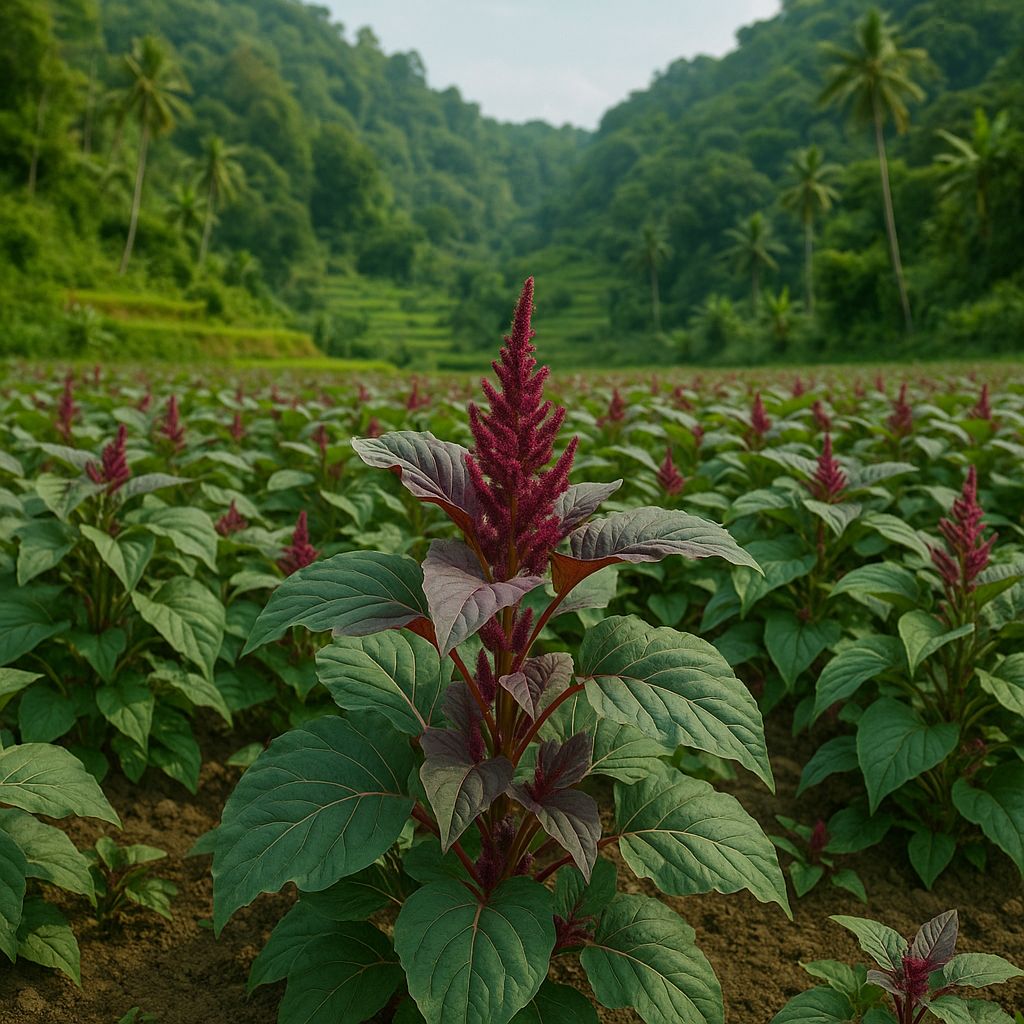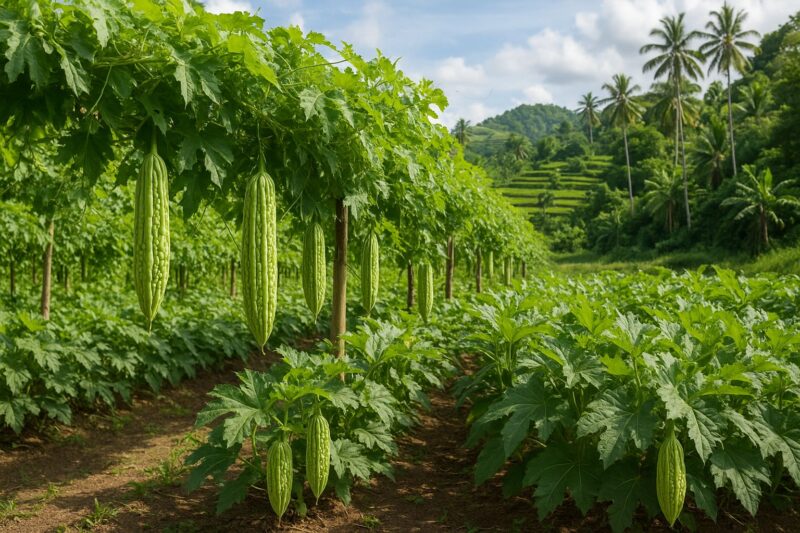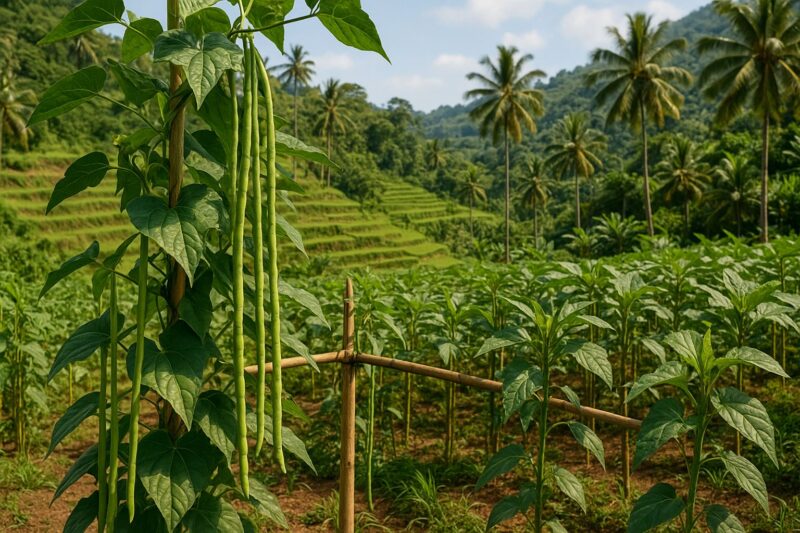Amaranth—locally known as kulitis or kulitis—offers nutritious, iron-rich greens in dishes from ginisang kulitis in Cavite to soups in Visayas. Thriving under warm, humid conditions, this leafy vegetable matures rapidly—often within 30 days—and regrows after cutting, making it perfect for continuous harvest. With lessons from my own Bulacan garden and insights from upland growers in Benguet and rooftop planters in Metro Manila, here’s how to cultivate kulitis successfully across the archipelago.
Variety Selection
Choose local red-stemmed (“Red Spinach”) or green-stemmed varieties (“White Stem”) based on preference and market demand. Red-stem kulitis adds color to salads and stir-fries, while green-stem types yield tender shoots favored for traditional recipes. Planting both gives you visual appeal and flavor variety.
Soil Preparation
Amaranth thrives in loose, fertile soil with good drainage. In clay-rich beds, incorporate two wheelbarrows of homemade compost and a handful of rice hull charcoal per ten square meters to improve aeration. In sandy coastal soils—common in Samar or Palawan—add aged chicken manure or coconut coir to retain moisture. Aim for a soil pH of 6.0–7.0; if it trends acidic, a light application of dolomite lime corrects it.
Sowing and Timing
Sow seeds directly in the field or containers at the onset of the rainy season—June through July in lowlands—or in cooler upland months of September and October. Broadcast seeds thinly over raised beds or make furrows 20 centimeters apart, dropping seeds every 5 centimeters. Cover lightly with soil, then water gently. Seeds germinate in 4–7 days when soil temperatures stay between 25–30 °C. In Bulacan, I’ve had best success sowing under 30 percent shade cloth during the hottest weeks to prevent seedbed bake-out.
Thinning and Spacing
Once seedlings reach 5 centimeters tall—usually two weeks after sowing—thin to 15–20 centimeters apart by snipping excess plants at the soil line. This spacing allows ample room for leaves to expand, improves air circulation, and reduces fungal risks in humid weather.
Watering and Mulching
Amaranth requires consistent moisture for tender leaves but resents waterlogging. Water early each morning—wetting soil to a depth of 10 centimeters—then let surfaces dry by afternoon. Mulch with rice straw or shredded leaves to conserve moisture, suppress weeds, and moderate soil temperature. In containers or raised beds—common in urban gardens—I water daily during dry spells, checking soil by feel: it should crumble, not ball.
Feeding and Side-Dressing
A base dressing of compost at planting supplies most nutrients. Four weeks in, when plants have formed robust leaf clusters, side-dress once with compost tea or a light sprinkle of decomposed chicken manure around the drip line. Amaranth’s rapid growth generally limits the need for further fertilizer; too much nitrogen can promote leggy stems at the expense of flavor.
Pest and Disease Management
Kulitis faces few serious pests. Aphids cluster under new leaves; a gentle spray of neem oil or water flush usually controls them. Slugs nibble tender shoots after rain—handpick at dawn or use shallow beer traps. Leaf spot diseases can appear in stagnant air; prune inner foliage and maintain 15–20 centimeter spacing to enhance airflow.
Harvesting and Continuous Cropping
Begin harvesting outer leaves once plants reach 20–25 centimeters tall—typically four weeks after sowing. Snip leaves or entire shoots just above the second node, leaving the plant center intact for regrowth. Frequent picking every 7–10 days encourages continuous leaf production for up to three months. When plants become woody, pull and replace with new sowings for a continuous supply.
Case Study
A rooftop farmer in Quezon City staggered kulitis sowings every two weeks under partial shade and achieved nearly year-round harvests, selling fresh greens at weekend markets and supplying local restaurants seeking vibrant salad leaves.
Final Thoughts
Amaranth’s rapid cycle, ease of care, and high nutritional value make it an excellent addition to Filipino gardens—from backyard beds to balcony containers. By mastering variety choice, soil health, sowing timing, moisture, feeding, and simple pest checks, you can enjoy crisp, flavorful kulitis harvests season after season.
I’m open for consulting and speaking opportunities on sustainable vegetable production nationwide. Let’s grow together.
#Kulitis #Amaranth #LeafyGreens #PhilippineFarming #SustainableAgriculture #HomeGarden #ConsultingAvailable #SpeakingOpportunities




